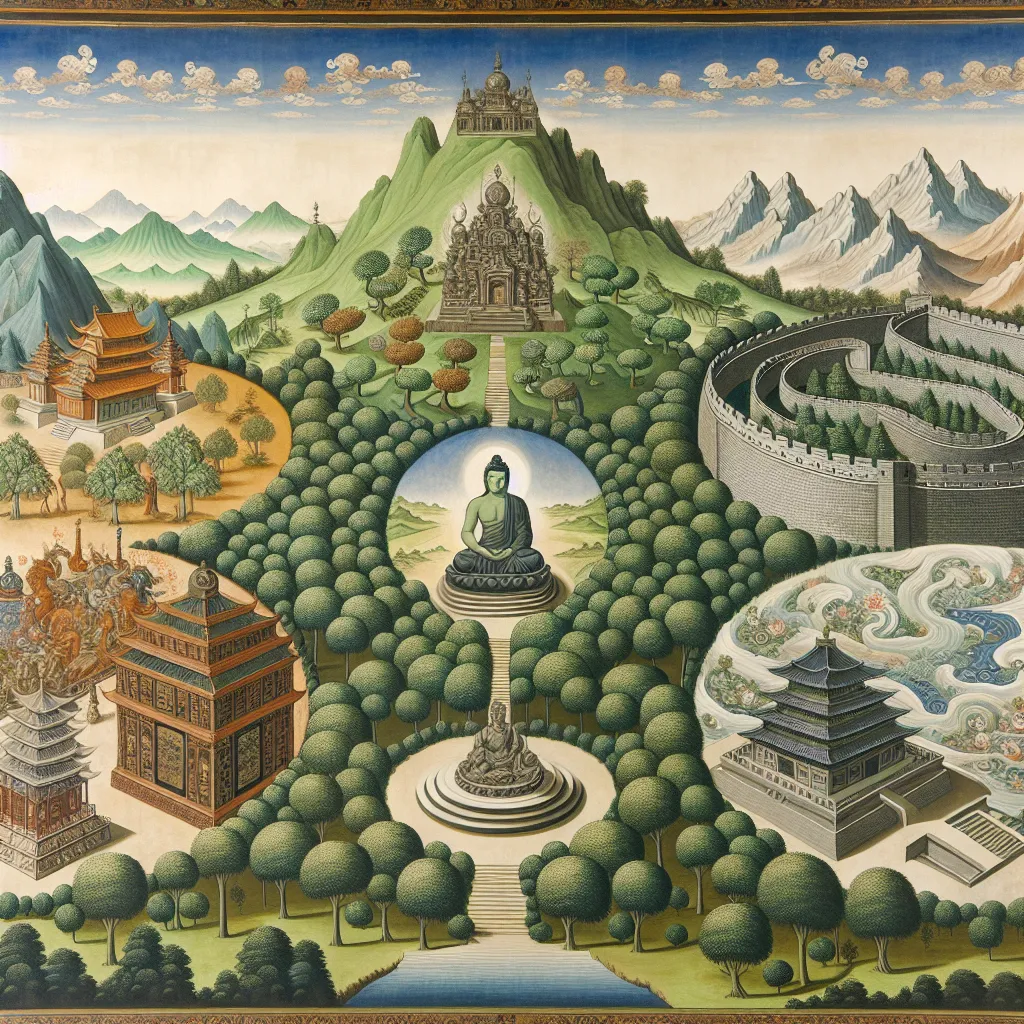
- Published on
- Authors

- Name
- You
The Origins of Zen Buddhism: From India to China and Japan
Zen Buddhism, often glimpsed through the haze of incense or the calm of a monk in meditation, is more than just a spiritual practice. It is a journey through centuries, countries, and cultures. In this article, we will explore the intricate tapestry of Zen Buddhism, following its origins and growth from the heart of India, through the valleys of China, and across the seas to Japan.
The Birthplace: India
Zen Buddhism finds its embryonic roots in India with the birth of Siddhartha Gautama, commonly known as the Buddha, around 563 BCE. The core tenets of Buddhism—such as the Four Noble Truths and the Eightfold Path—originated here.
- Key Figure: Siddhartha Gautama (The Buddha)
- Primary Teachings:
- Four Noble Truths:
- The truth of suffering (Dukkha)
- The truth of the cause of suffering (Samudaya)
- The truth of the end of suffering (Nirodha)
- The truth of the path that leads to the end of suffering (Magga)
- Eightfold Path:
- Right Understanding
- Right Intent
- Right Speech
- Right Action
- Right Livelihood
- Right Effort
- Right Mindfulness
- Right Concentration
- Four Noble Truths:
The Transformation: From India to China
The journey of Buddhism to China marked the transformation of these simple practices into the profound and distinctive form known as Chan Buddhism. This transformation began around the 5th century CE.
- Introduction: The transmission of Buddhism to China is often attributed to the monk Bodhidharma.
- Core Concepts:
- Meditation (Zazen): Central to Chan practice, emphasizing direct experience and realization.
- Koans: Paradoxical anecdotes or riddles used to provoke enlightenment.
Degrees of Transformation
| Phase | Characteristics | Key Figures |
|---|---|---|
| Initial Introduction | Emphasis on meditation and direct realization | Bodhidharma |
| Integration Phase | Adaptation of Buddhism with Taoist elements | Hongren, Huineng |
| Establishment Phase | Development of textual traditions and refined practices | Shenxiu, Shenhui |
The Culmination: Arrival in Japan
As China's Chan Buddhism traveled further east, it arrived in Japan in the 12th century. Here, it evolved into what is today identified as Zen Buddhism.
- Transmission: Introduced by the monk Eisai, who brought the teachings to Japan after studying in China.
- Schools of Zen:
- Rinzai: Focuses on Koan practice.
- Soto: Emphasizes Shikantaza, "just sitting" meditation.
Major Zen Schools in Japan
| School | Founding Teacher | Core Practice |
|---|---|---|
| Rinzai | Eisai | Koan practice |
| Soto | Dogen | Shikantaza (just sitting) |
The Intersection of Science and Zen
As Zen Buddhism entered the modern era, its compatibility with advanced scientific concepts like neuroplasticity and mindfulness-based stress reduction has garnered profound interest.
- Neuroscientific Correlations: Research shows that regular meditation can alter brain function and structure, supporting the Zen emphasis on meditation.
- Mindfulness Research: Studies highlight benefits in stress reduction, emotional regulation, and overall mental health.
Conclusion
From its humble beginnings in India through the philosophical complexities added in China and its final refinement in Japan, Zen Buddhism is a testament to the evolving nature of spiritual wisdom. The intersection of Zen with modern science reveals an additional dimension, making its ancient teachings accessible and relevant today.
Zen Buddhism’s journey is not merely a historical phenomenon but a living philosophy—a path accessible to anyone willing to tread its meditative steps.
Explore more on this fascinating journey and awaken the Zen within you. Subscribe to stay updated with more such enlightening articles.
